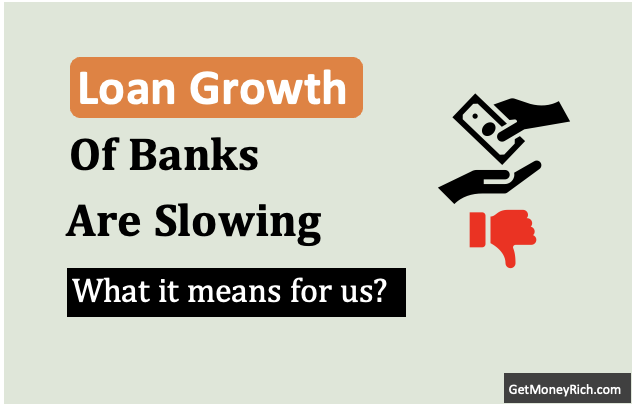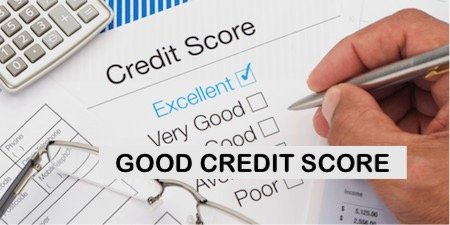A common misunderstanding between credit and debt is that they are often used interchangeably or considered synonymous. While they are closely related concepts, they have distinct meanings and implications. This article will use examples to explain the difference between credit and debt
Misunderstandings about credit and debt
- Equating credit with debt: Some people mistakenly believe that credit itself is the debt. However, credit refers to the trust or borrowing capacity extended to individuals or entities. Whereas, debt represents the actual financial obligation resulting from utilizing that credit.
- Credit is a negative aspect of financial management: Some individuals associate credit with excessive borrowing or being in debt. However, credit, when used responsibly, can be a valuable tool for facilitating economic activities. It is the misuse or mismanagement of credit that can lead to overwhelming debt and financial difficulties.
- Being debt-free will get a good credit score: While minimizing debt is generally advisable. But having no credit history can be as damaging as a high debt burden. In a way, credit is an unavoidable requirement for the majority. Keeping oneself creditworthy is also necessary.
Many people struggle to grasp the distinction between credit and debt. In this article, we aim to shed light on this topic by providing clear explanations and relatable examples. These examples go beyond the conventional examples of credit cards, home loans, and personal loans.
People who are new to the concept of credit and debt find it hard to distinguish between the two.
So, let’s try to get this concept clear using examples instead of theoretical explanations.

Examples To Understand The Difference Between Credit and Debt
Many people do not know the difference between credit and debt.
Earlier, I used to wrongly define credit as follows:
“Credit is the amount of money a person or business owes to a lender or financial institution.”
This definition is incorrect because it confuses credit with debt. In reality, “credit represents the financial trust extended to a person or business based on their creditworthiness (or their ability to repay the debt), enabling them to borrow money or access goods and services.” On the other hand, “debt is the actual financial obligation that arises when one borrows money or obtains credit.”
The incorrect definition fails to capture the essential aspect of credit, which is the extension of trust and the ability to access funds or goods based on that trust. It wrongly emphasizes the owed amount rather than focusing on the concept of financial trust and the borrowing capacity that credit represents.
Remember, credit is not about the amount owed but rather the ability to borrow or access funds based on one’s creditworthiness. It’s crucial to understand this distinction to have a clear understanding of credit and its role in financial transactions.
Before we proceed to see the examples, another small clarification about debt.
Is debt a synonym for a loan?
In a general sense, debt can be considered synonymous with a loan.
A loan is a specific type of debt. When someone takes out a loan, they incur a debt to the lender. The borrower is obligated to repay the borrowed amount, often with interest, over a specified period of time. It’s important to note that bank loans are only one form of debt.
The other forms of debt borrowing can also arise from other forms of credit, such as credit cards, lines of credit, mortgages, personal loans, or borrowing from individuals, etc.
Example #1: Difference Between Credit and Debt (Day-to-Day Life)
Imagine you are a member of a community-based library. The library allows its members to borrow books for a certain period. Here’s how credit and debt come into play in this scenario:
Credit:
As a member of the library, you have access to credit in the form of borrowing books. The library extends credit to you, allowing you to take books home without upfront payment. This credit represents the trust placed in you as a member to borrow books and return them within the specified borrowing period.
Debt:
When you borrow a book from the library, you incur a debt to the library. This debt represents your obligation to return the book within the agreed-upon timeframe. Until you return the book, you have a debt to the library for that specific item. Once you return the book in good condition, your debt to the library is settled.
In this example, credit is the trust extended to you by the library, enabling you to borrow books without immediate payment. Debt, on the other hand, represents the specific obligation you owe to the library to return the borrowed book within the designated timeframe. The credit allows you to enjoy the benefits of borrowing books, while the debt signifies your responsibility to fulfill your part of the agreement by returning the borrowed item.
Example #2: Difference Between Credit and Debt (Credit Card)
Imagine you want to purchase a new smartphone worth ₹50,000, but you don’t have enough money to pay for it upfront. Here’s how credit and debt come into play:
Credit:
Suppose you have a credit card with a credit limit of ₹1,00,000. You decide to use your credit card to make the purchase. By using your credit card, you are accessing the credit extended to you by the card issuer. In this case, the credit card company allows you to borrow ₹50,000 to complete the purchase. The credit card represents your ability to access this borrowing facility.
Debt:
After making the purchase using your credit card, you now have a debt of ₹50,000. This debt is the financial obligation you owe to the credit card company. It represents the amount you borrowed to buy the smartphone. You will need to repay this debt according to the terms and conditions set by the credit card company. If you don’t pay off the debt promptly, it may accrue interest charges, making the total amount owed higher over time.
In this example, credit is the financial trust and facility provided to you by the credit card company. It allows you to make the purchase even if you don’t have immediate funds. Debt, on the other hand, is the actual amount you owe as a result of using that credit.
It’s important to note that credit and debt are intertwined. How? Because credit enables you to incur debt. But it is essential to remember that they are distinct concepts. Credit represents the ability to borrow or access funds, while debt represents the actual obligation resulting from borrowing.
Example #3: Difference Between Credit and Debt (Car Loan)
Suppose you are looking to purchase a car worth ₹5,00,000, but you don’t have enough money to buy it outright. Here’s how credit and debt come into play in this scenario:
Credit:
You approach a bank or a financial institution for a car loan. After reviewing your creditworthiness, income, and other factors, the bank approves your loan application. The bank extends credit to you by granting you a loan of ₹5,00,000. This credit represents the financial trust placed in you to borrow the required amount to purchase the car.
Debt:
With the approval and disbursement of the loan, you now have a debt of ₹5,00,000. This debt is the financial obligation you owe to the bank. It represents the actual amount borrowed to buy the car. You enter into a loan agreement with the bank, which outlines the repayment terms, including the interest rate, monthly installments, and the duration of the loan. You will need to make regular payments to the bank over the agreed-upon period to repay the debt.
In this example, credit is the financial trust extended to you by the bank, allowing you to borrow the necessary funds to purchase the car. Debt, on the other hand, is the specific amount you owe to the bank as a result of taking the loan. The credit enables you to acquire the car, while the debt is the subsequent financial obligation that arises from borrowing.
Example #4: Difference Between Credit and Debt (Business Purchase)
Imagine you are running a small business that sells handmade crafts. You need to purchase raw materials worth ₹50,000 to fulfill a large order. Here’s how credit and debt come into play in this scenario:
Credit:
You approach a supplier you have been working with for some time. Based on your business relationship and creditworthiness, the supplier offers you a credit arrangement. They allow you to take the necessary raw materials worth ₹50,000 without making an immediate payment. This credit extended by the supplier represents their trust in your ability to repay the amount at a later date.
Debt:
After receiving the raw materials on credit, you now have a debt of ₹50,000 to the supplier. This debt represents the financial obligation you owe to the supplier for the materials you received. It signifies the actual amount you borrowed from the supplier to fulfill your business needs. You are now responsible for repaying this debt to the supplier as per the agreed-upon terms, which may include a specific repayment period or payment schedule.
In this example, credit is the trust placed in you by the supplier, allowing you to acquire the necessary raw materials for your business without immediate payment. Debt, on the other hand, is the actual amount owed to the supplier as a result of utilizing that credit. The credit facilitates your business operations, while the debt represents the subsequent financial obligation arising from the borrowing arrangement with the supplier.
Example #5: Difference Between Credit and Debt (Business Sale)
Let’s say you are a freelance coder, and you receive a request from a new client to write a code for their mobile app. The client agrees to pay you ₹20,000 for your services upon completion of the project. Here’s how credit and debt come into play in this scenario:
Credit:
Based on your professional reputation and the client’s trust in your skills, they agree to provide you with credit for the project. This means they agree to pay you ₹20,000 after you deliver the complete code. You haven’t received any payment upfront but there is still credit in play here. The client extends credit to you based on their confidence that you will provide the desired service and deliver the final product.
Debt:
As you start working on the code, you are now incurring a debt to the client. This debt represents the obligation you have to deliver the codes as per the agreed-upon terms and specifications. Until you complete the project and provide the final product, you owe the client the codes they are expecting. Once you deliver the codes and the client approves it, your debt to the client is settled.
In this example, credit is the trust placed in you by the client, allowing you to begin the project without receiving payment upfront. Debt, in turn, represents the specific obligation you owe to the client to write the complete the code as agreed. The credit enables you to initiate the project, while the debt represents the subsequent responsibility to fulfill your part of the agreement.
The Concept of Credit Utilization
Credit utilization refers to the percentage of your available credit that you are currently using. It is an important factor that impacts your credit score. Let’s consider an example to understand this concept:
Suppose you have a credit card with a credit limit of ₹1,00,000. Currently, your outstanding balance on the card is ₹30,000. In this scenario, your credit utilization is calculated by dividing your outstanding balance (₹30,000) by your credit limit (₹1,00,000) and multiplying by 100. So, your credit utilization, in this case, is 30% (₹30,000 / ₹1,00,000 * 100).
A lower credit utilization percentage is generally considered better for your credit score. It indicates that you are not heavily reliant on credit and are managing your debt responsibly. Lenders and credit rating agencies often view lower credit utilization as a sign of good financial management.
For example, let’s compare two individuals:
- Person A: Has a credit card with a credit limit of ₹1,00,000 and an outstanding balance of ₹80,000. In this case, their credit utilization is 80% (₹80,000 / ₹1,00,000 * 100).
- Person B: Has a credit card with the same credit limit of ₹1,00,000 but an outstanding balance of ₹20,000. Person B’s credit utilization is 20% (₹20,000 / ₹1,00,000 * 100).
Even though both individuals have the same credit limit, Person B has a lower credit utilization, which is more favorable from a credit scoring perspective.
Managing your credit utilization by keeping it low demonstrates responsible credit usage and can positively impact your credit score. It’s generally recommended to aim for a credit utilization rate below 30% to maintain a healthy credit profile.
Remember, credit utilization is just one aspect of credit and debt management, but it can have a significant impact on your creditworthiness and financial well-being.
Conclusion
Here’s a summary of the difference between credit and debt in a tabulated form based on the examples provided:
| Examples | Credit | Debt |
|---|---|---|
| Example #1: Day-to-Day Life | Borrowing books without upfront payment | Obligation to return borrowed books |
| Example #2: Credit Card | Accessing credit limit to make a purchase | The specific amount owed to the lender |
| Example #3: Car Loan | Loan granted to purchase a car | The loan amount disbursed to the borrower |
| Example #4: Business Purchase | Supply of the raw material without upfront payment | Payment to be made to the supplier |
| Example #5: Business Sale | The order received from the client is the credit | The Delivery of the complete codes |
In each example, credit represents the trust extended or borrowing facility provided, enabling individuals or businesses to access funds, goods, or services. Debt, on the other hand, represents the actual financial obligation resulting from utilizing that credit, indicating the specific amount owed and the responsibility to repay or fulfill the borrowed obligations.
Understanding the difference between credit and debt is crucial for managing personal and financial well-being. Throughout this article, we have explored various examples that go beyond the typical loan scenarios, providing a comprehensive understanding of these concepts.
The examples we have examined, whether it’s using a credit card for a purchase, obtaining a car loan, engaging in business transactions, or even borrowing books from a library, demonstrate how credit and debt operate in diverse contexts. They showcase the interplay between credit, which allows individuals or businesses to access resources, and debt, which represents the subsequent responsibility to repay or fulfill the borrowed obligations.
Final words
By grasping the nuances between credit and debt, readers can make informed financial decisions, maintain healthy credit profiles, and cultivate strong creditworthiness. Whether it’s effectively utilizing credit cards, managing loan obligations, or understanding the dynamics of business transactions, this knowledge will empower individuals and businesses to navigate the financial landscape with confidence.
Credit and debt are intertwined but distinct concepts. They play significant roles in personal and business finances, and understanding their implications is key to achieving financial stability and building a strong credit foundation.
Have a happy investing.





